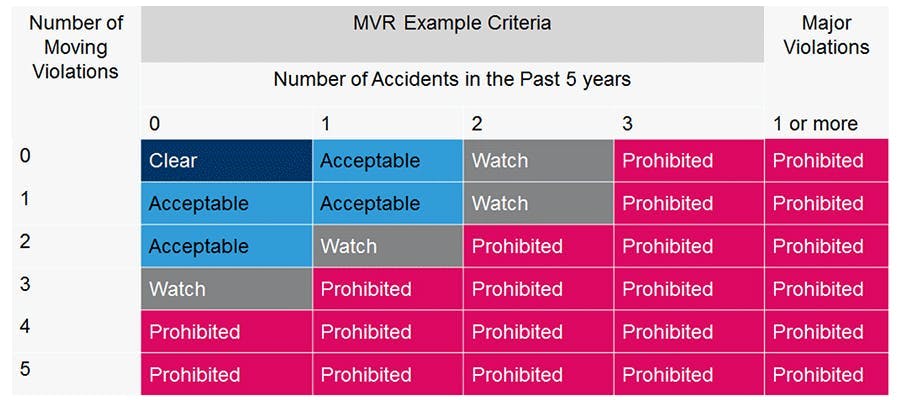Managing Your Vehicle Safety Program
By Jeff Chittaro | Published April 15, 2022

Accident statistics gathered from the 2020 census from the Bureau of Labor Statistics asserted that over 37% of all work-related fatalities were attributed to transportation activities. This number is double the next closest exposure category (Fall, Slip, Trip) - which comes in at just over 16% of all occupational fatalities. With such a clear leader, logic would dictate that attention to vehicle safety would take a front seat to other safety training and practices, but this is rarely the case.
April is known as Distracted Driving Awareness Month. As we head into spring and on into summer, where accidents tend to peak, now is a great time to evaluate your fleet program to ensure you’re safe on the road. Consider using the outlined topics below as a self-audit and benchmark as you look to improve your vehicle operations moving forward.
Program Development
Establish a solid foundation by developing a written program that addresses all vehicles and drivers. This includes rules for company vehicles as well as individuals using rental or personal cars for business use. Regardless of your company size, you should assign responsibility of the program to an employee who reports to top-level management. For the program to be effective, all employees from the top down must adhere to all company rules. Consider including the following items when building your program:
Written policy that is documented, enforced, and fully supported
Driver selection criteria, driver training
Policy limiting cell phones and other mobile technology
Vehicle maintenance policy
Accident reporting procedures
Driver Evaluation
As with most safety and business-related operations, a good starting point is knowing where you are at or what you have. Who you hire to drive is critical! For example, statistics from the American Transportation Research Institute show an 80% increase in crash risk for drivers with a previous accident or improper passing violation.
There are a number of tools in the marketplace that can aid you in understanding the skill level and tendencies of your drivers. Use the following procedures to your advantage:
Evaluate employee application information for red flags
Establish acceptable MVR criteria
Review driver history through motor vehicle record (MVR) review- Pre-hire
Annual
Complete a ride-along or driving test
Ask driving-related questions in the interview process
Use telematics and GPS for ongoing monitoring
*Major Violations – Driving with a suspended license, DUI, Racing, Reckless Driving, Vehicular Manslaughter, Hit and Runs, Speeding more than 100 mph
Driver Training
Is driver training on a post-hire or annual basis enough? Think about other safety topics and how often they are discussed, reviewed, corrected, and improved. It shouldn’t be any different with vehicle exposures. Coaching should be frequent and address common exposures specifically related to your operations. Training should be delivered on a weekly, monthly or quarterly basis.
Initial driver training might be straight-forward and easy to understand but implementing additional training that aligns with accident information and in-house data can help build a more effective and relatable training program. Items to consider:
Basic training should be completed by all drivers
Remedial training for:- Near miss
At-fault accidents
Citations
Vehicle specific training
Accident Reporting Procedures
Properly documenting accidents as they occur is critical for a number of reasons. First, the information is needed to process the claim and assist with determining fault. Second, the data collected is critical in preventing future accidents and implementing appropriate corrective action. Use annual data to set goals for the upcoming year. Accident data should include:
A detailed accident report including photos
Training on how to complete the report
Interview with the driver and any witnesses or passengers
Police report
Scene investigation by a company representative for serious accidents
Corrective action procedures
Technology
Electronic aids such as in-vehicle cameras, telematics, and sensory notification systems have flooded the market recently. These manufacture-installed or aftermarket devices can assist with a number of issues such as – reducing distractions, limiting mobile device use and providing critical driver data.
Feedback from these systems can help you prioritize your safety efforts and focus areas. When looking to add these items to your program, be sure to take a look at the total cost of your fleet operations (vehicle damage, work comp cost, lost time, deductible, insurance cost, etc). Modern technology may be presented in a number of forms including:
Cameras (forward and rear-facing)
Telematics
Driver-assist (lane assist, automatic braking, blind-spot monitoring, audio notifications)
Apps
The items outlined in this article are an excellent starting point but by no means an all-inclusive list. As you build your program be sure to tailor it to your specific exposures and needs.
For more information reach out to Jeff Chittaro at jeff.chittaro@newfront.com

Jeff Chittaro
Jeff is the Senior Manager of Risk Control Services at Newfront.



